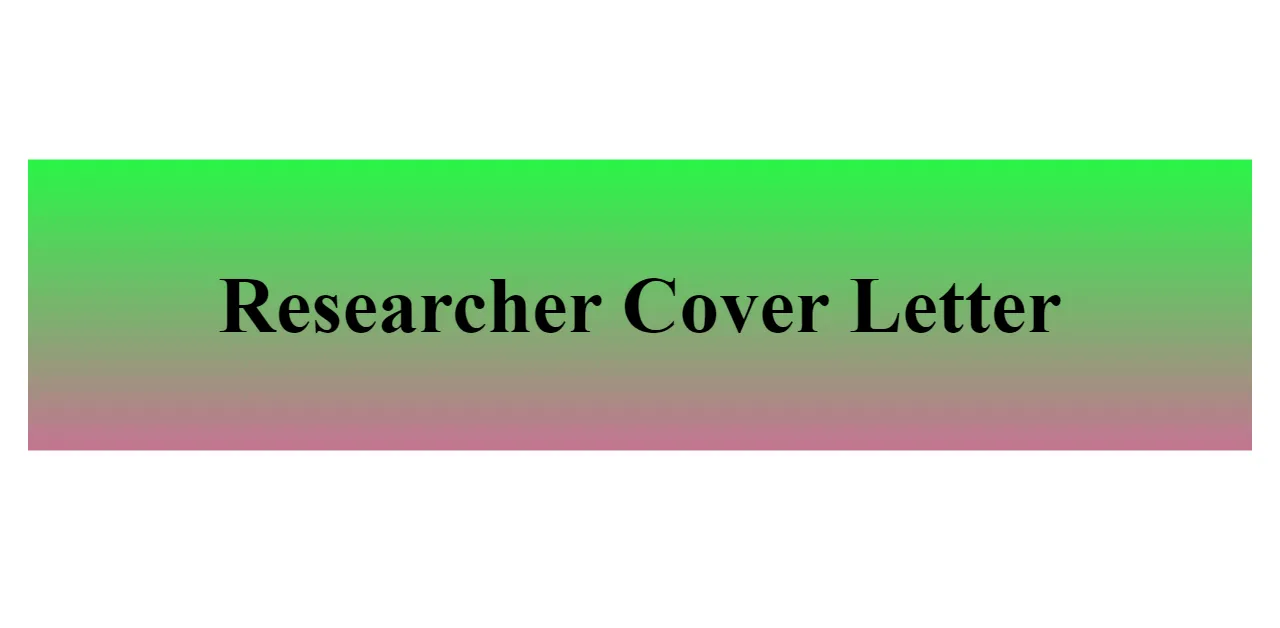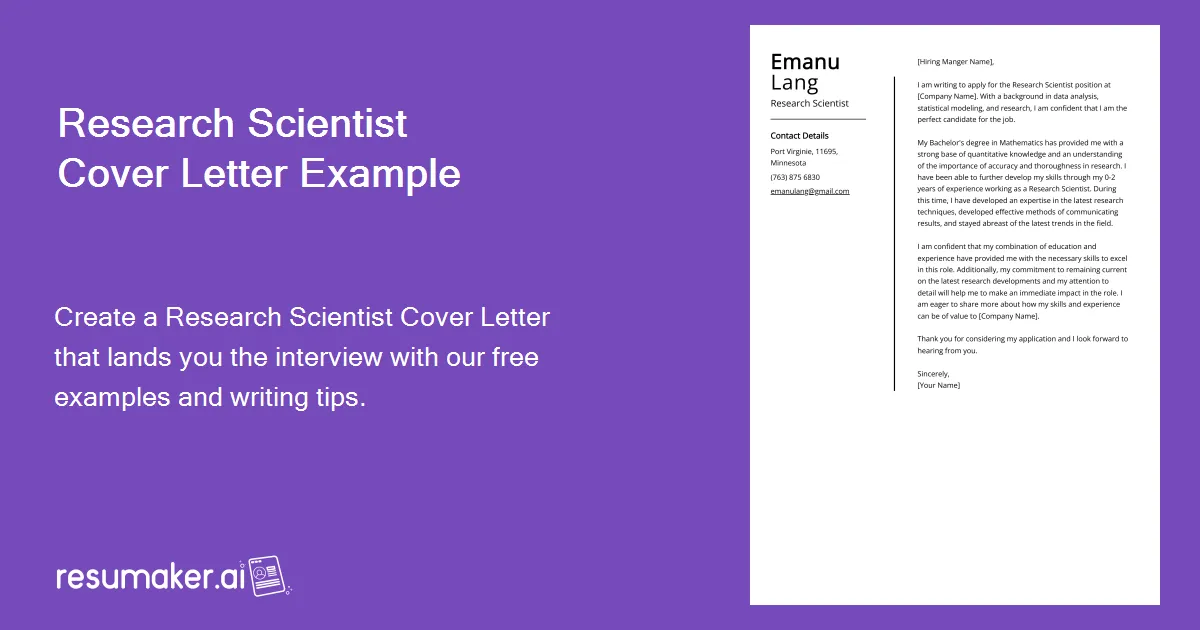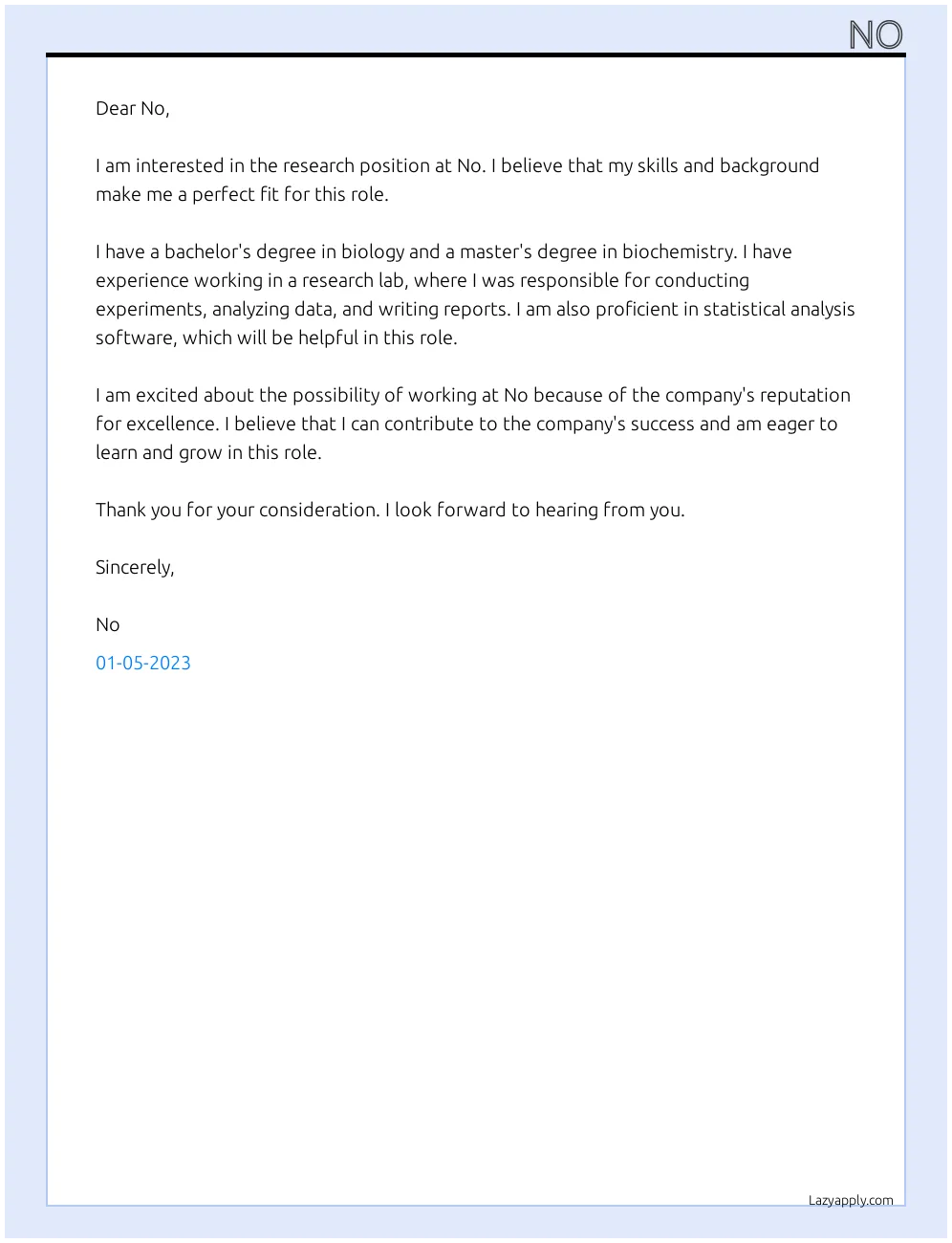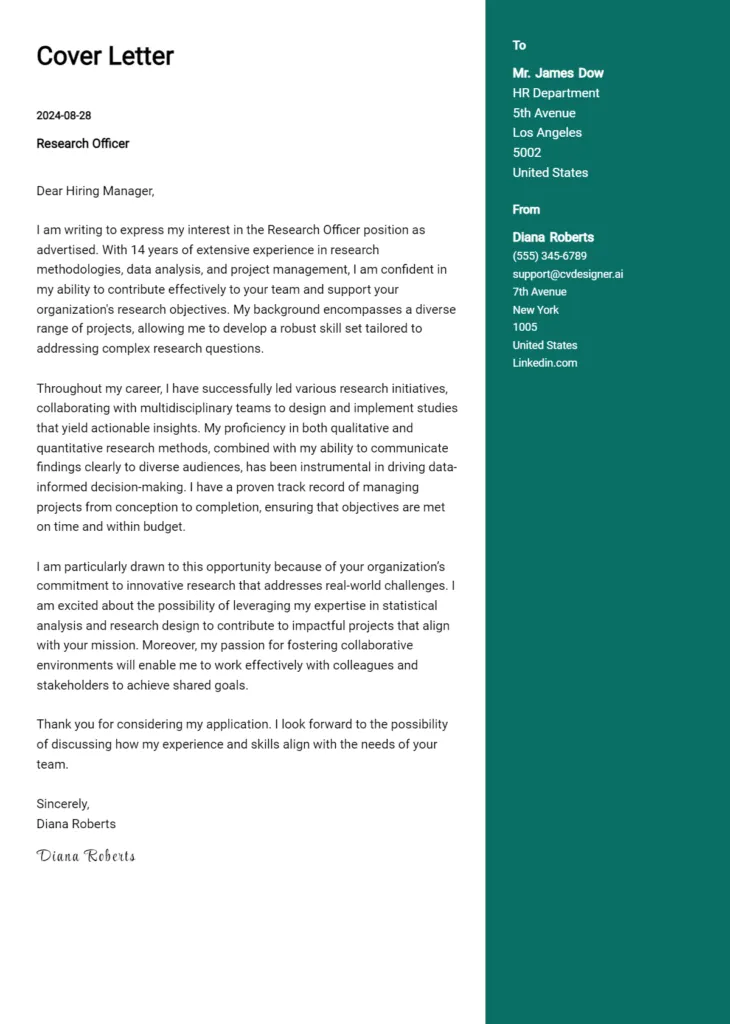What is a Job Cover Letter
A job cover letter is a crucial document that accompanies your resume when applying for a job. It serves as your introduction to a potential employer, allowing you to highlight your qualifications, skills, and enthusiasm for the position. Unlike your resume, which provides a factual overview of your work history and education, your cover letter gives you the opportunity to express your personality, explain why you’re a good fit for the company and the specific role, and demonstrate your writing skills. It’s your chance to make a strong first impression and convince the hiring manager to read your resume closely. This document is a strategic marketing tool to make sure the company knows the best things about you. It is meant to sell yourself to a potential employer.
Why is a Cover Letter Important
In today’s competitive job market, a cover letter can significantly increase your chances of landing an interview. It allows you to differentiate yourself from other candidates by providing a more detailed explanation of your skills and experience. A well-crafted cover letter demonstrates your communication skills, attention to detail, and genuine interest in the role and the company. It also allows you to address any potential gaps in your resume, such as career changes or periods of unemployment. Many employers consider a cover letter as a mandatory part of the application process, and failing to include one can lead to immediate rejection. Furthermore, a cover letter shows you’ve taken the time to research the company and understand the job requirements, which demonstrates your commitment and professionalism.
Key Components of a Standout Job Cover Letter

A standout job cover letter includes several key components that work together to create a compelling narrative. It starts with a professional heading that includes your contact information and the date. The opening paragraph should immediately grab the reader’s attention by stating the position you’re applying for and how you learned about the opportunity. The body paragraphs should highlight your relevant skills and experience, using specific examples to demonstrate your accomplishments. It is important to tailor the content for each company. The cover letter needs to connect your qualifications to the job description. Finally, the closing paragraph should reiterate your interest in the position and express your eagerness to learn more and discuss your qualifications further. Make sure your ending is professional and encouraging.
Personalizing Your Cover Letter for Each Job
One of the biggest mistakes job seekers make is sending out generic cover letters. To truly stand out, you must personalize each cover letter for the specific job and company. Start by researching the company’s mission, values, and culture. Tailor your letter to address the specific requirements outlined in the job description, highlighting the skills and experiences that align with the role. Show that you understand the company’s needs and explain how you can contribute to their success. Mention specific projects or achievements that demonstrate your ability to deliver results. Address your letter to the hiring manager by name if possible, which shows you’ve taken the initiative to learn about the company and the people involved. Personalized letters are always more effective.
Highlighting Relevant Skills and Experience
Your cover letter is the perfect opportunity to showcase your most relevant skills and experience. Analyze the job description carefully and identify the key qualifications the employer is seeking. Then, provide specific examples from your past experiences that demonstrate how you’ve successfully used those skills. Quantify your achievements whenever possible by using numbers and data to illustrate your impact. For example, instead of saying “Managed social media accounts,” you could say “Increased social media engagement by 30% in six months.” Use action verbs to describe your accomplishments, such as “led,” “managed,” “developed,” and “implemented.” Tailor your examples to match the requirements of the job, focusing on the skills and experiences that are most relevant to the role. Focus on the most important aspects of your work history.
Showcasing Your Personality and Enthusiasm

While a cover letter is a professional document, it’s also an opportunity to let your personality shine through. Use a tone that is professional yet enthusiastic, and show genuine interest in the position and the company. Avoid sounding generic or overly formal. Inject some personality into your writing style to make your letter more engaging and memorable. However, be mindful of the company’s culture and tone; adapt your style accordingly. Explain why you are excited about the opportunity and what specifically attracts you to the company. Express your enthusiasm for the role and your eagerness to contribute to the team. By showing your personality and passion, you can make a lasting impression on the hiring manager and set yourself apart from other candidates. Make sure to convey excitement and desire to work for the company.
Formatting and Design Tips
The formatting and design of your cover letter are just as important as the content. Use a professional font, such as Times New Roman, Arial, or Calibri, and ensure the font size is easy to read (typically 11 or 12 points). Use clear and concise language, and avoid jargon or overly complex sentences. Break up large blocks of text with paragraphs and bullet points to make your letter more visually appealing and easier to scan. Use headings and subheadings to organize your information and make it easy for the reader to find key details. Keep your letter concise, ideally no more than one page. Proofread your letter carefully to ensure there are no grammatical errors or typos, as these can reflect poorly on your attention to detail and professionalism. Pay close attention to the overall layout of your cover letter; ensure it is clean, well-organized, and visually appealing.
Proofreading and Editing Your Cover Letter
Proofreading and editing your cover letter is an essential step in the job application process. Errors in grammar, spelling, and punctuation can create a negative impression and undermine your credibility. Before submitting your cover letter, carefully proofread it multiple times, preferably after taking a break. Use spell-check and grammar-check tools, but don’t rely on them entirely. Read your letter out loud to catch any awkward phrasing or sentence structure issues. Ask a friend, family member, or career advisor to review your cover letter for clarity, accuracy, and overall effectiveness. Pay close attention to the tone and flow of your writing, and ensure that it is consistent throughout the letter. A well-proofread and edited cover letter demonstrates your attention to detail and commitment to excellence, increasing your chances of getting noticed by the hiring manager.
Common Mistakes to Avoid in Your Cover Letter

Several common mistakes can hurt your chances of getting an interview. Avoid generic cover letters that are not tailored to the specific job and company. Don’t simply rehash your resume; use the cover letter to expand on your qualifications and demonstrate your personality. Avoid using clichés or overly formal language. Do not include irrelevant information or details that are not related to the job. Steer clear of typos, grammatical errors, and spelling mistakes. Refrain from being negative or complaining about past jobs or employers. Avoid exaggerating your skills or experience. Do not make the cover letter too long; keep it concise and focused. Ensure your cover letter is well-written and properly formatted. By avoiding these common pitfalls, you can create a cover letter that impresses the hiring manager and increases your chances of landing an interview.
Final Thoughts and Call to Action
In conclusion, a well-crafted job cover letter is a powerful tool that can significantly improve your chances of getting hired. By following the secrets outlined in this guide, you can create a cover letter that stands out from the competition and highlights your unique qualifications and personality. Remember to tailor your letter to each job, showcase your relevant skills and experience, and demonstrate your enthusiasm for the role and the company. Always proofread and edit your cover letter carefully before submitting it. Take the time to write a compelling cover letter and increase your chances of landing your dream job. Now, go forth and write a cover letter that opens doors to new opportunities and sets you on the path to career success. Consider your next steps in securing the job by researching the company, tailoring the letter, and writing well.
